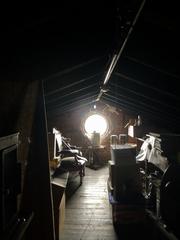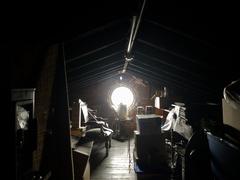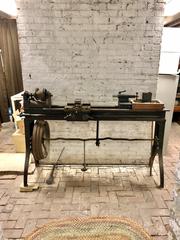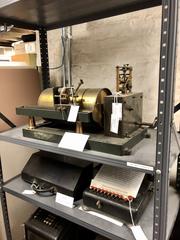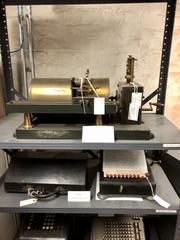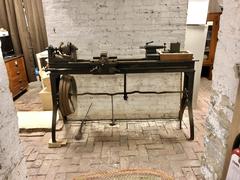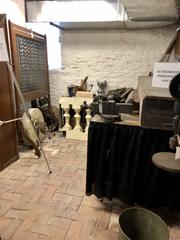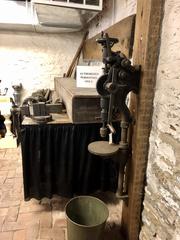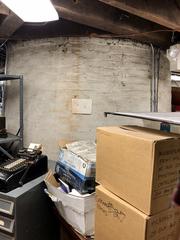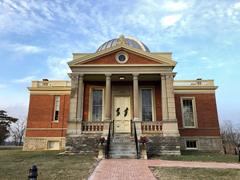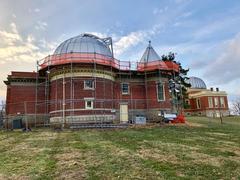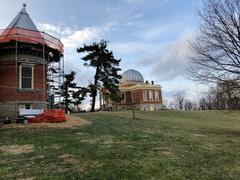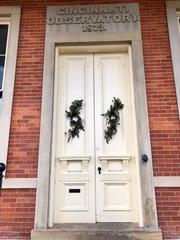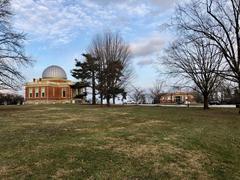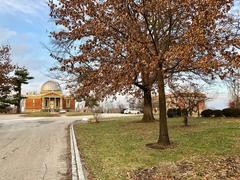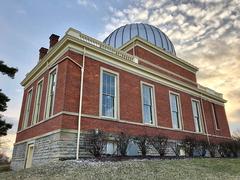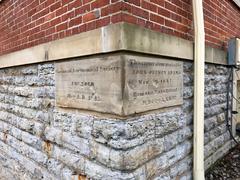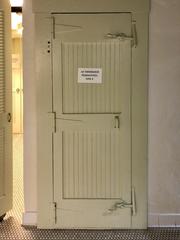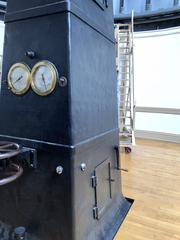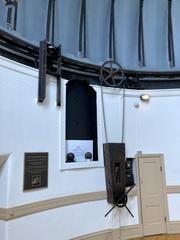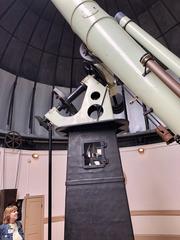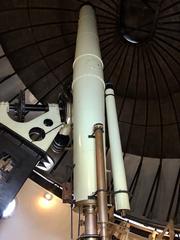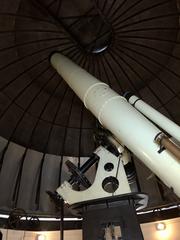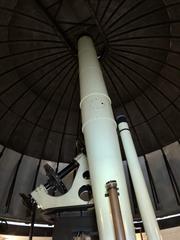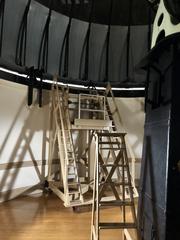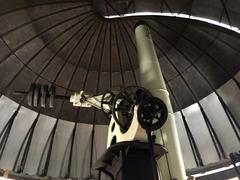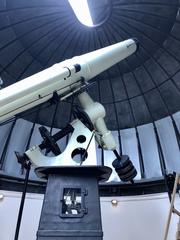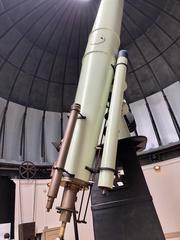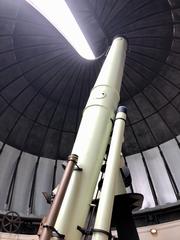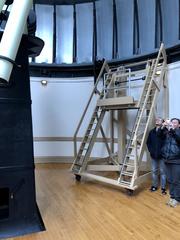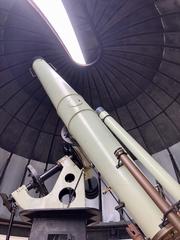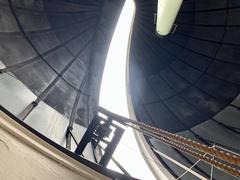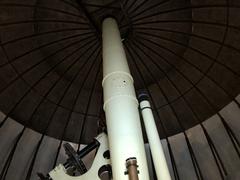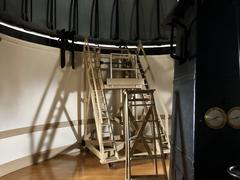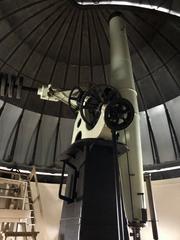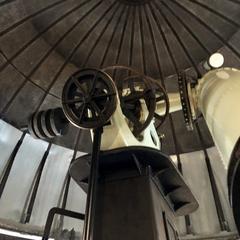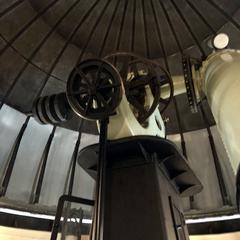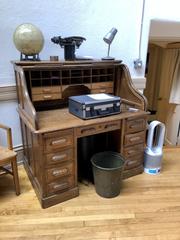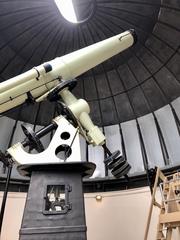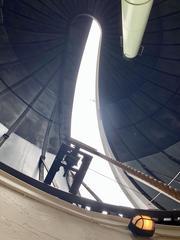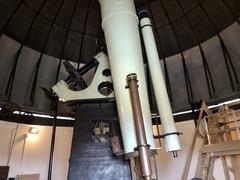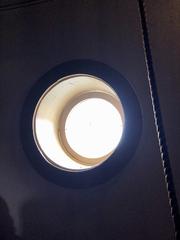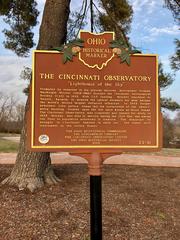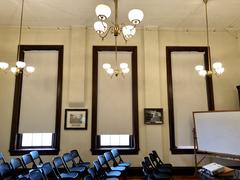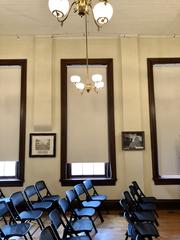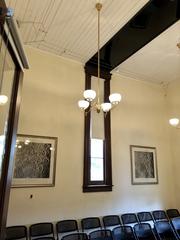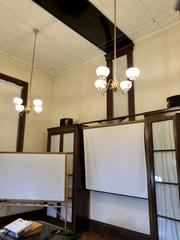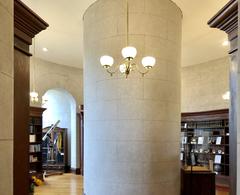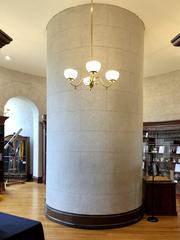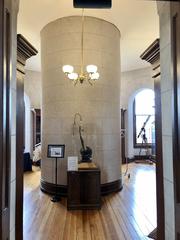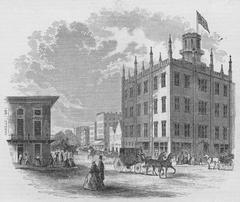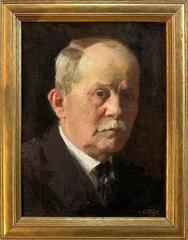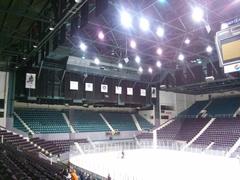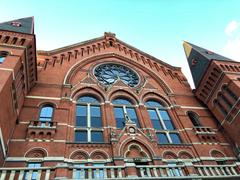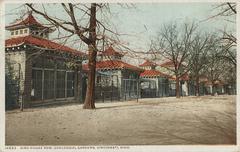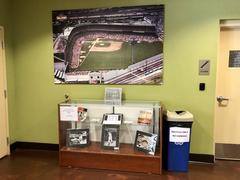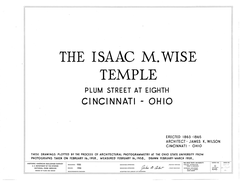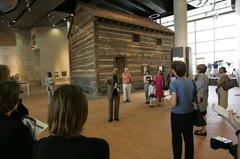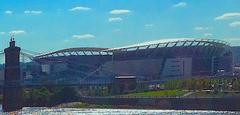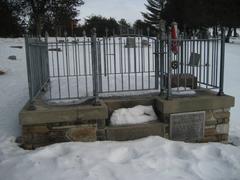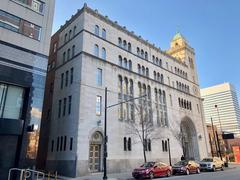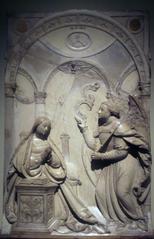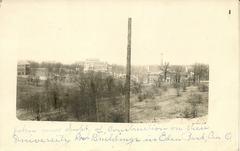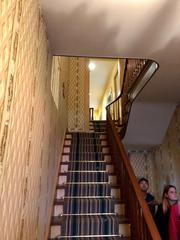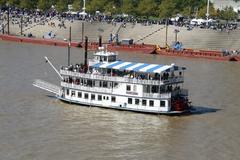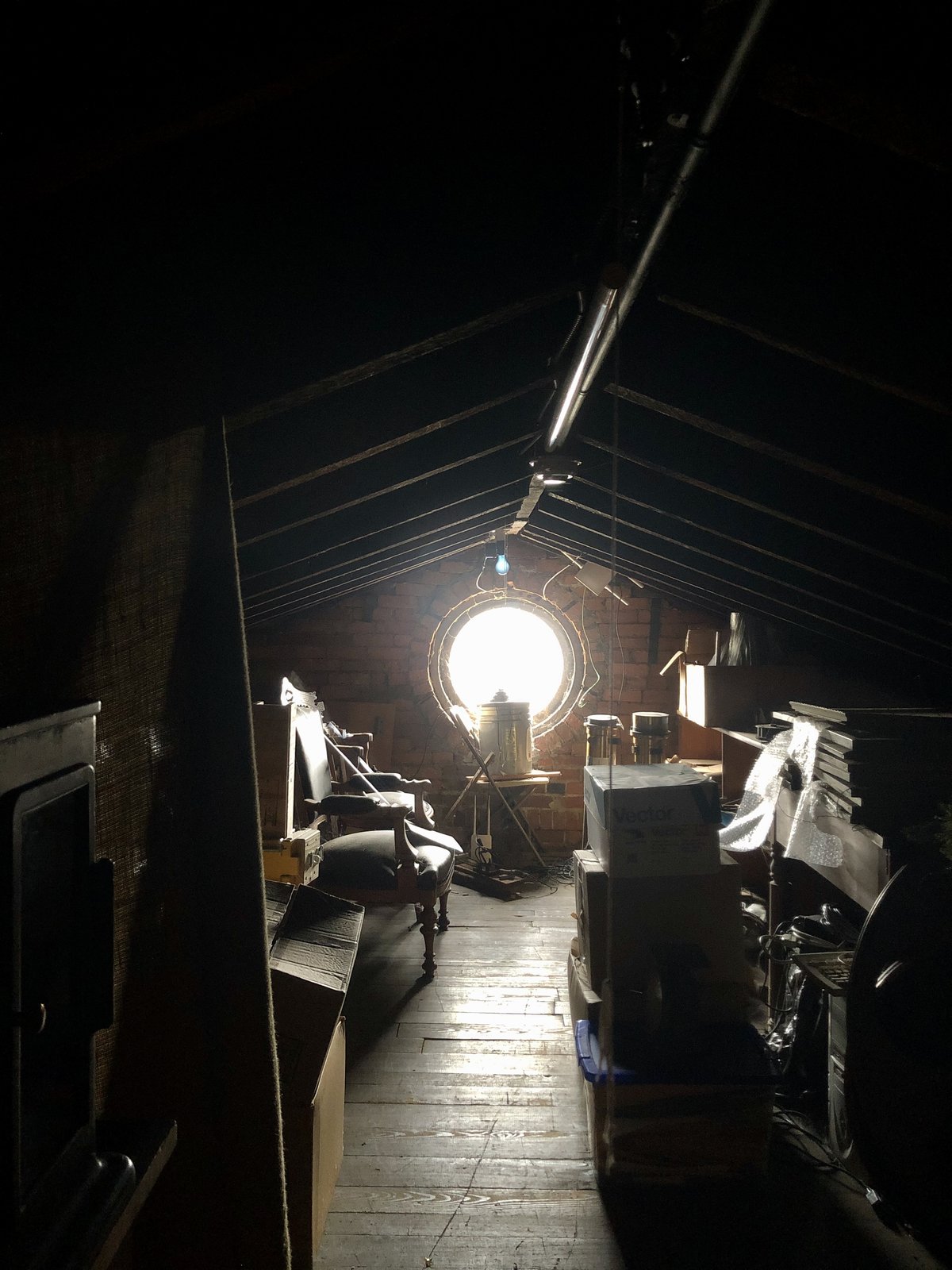
Cincinnati Observatory Visiting Hours, Tickets, and Historical Sites Guide
Date: 15/06/2025
Introduction
Nestled in Cincinnati’s Mount Lookout neighborhood, the Cincinnati Observatory is a beacon of American astronomical heritage. Established in the early 1840s and renowned as the “Birthplace of American Astronomy,” this historic site has played a pivotal role in advancing science and public engagement. Founded by Ormsby MacKnight Mitchel, the observatory was originally situated atop Mount Ida—later renamed Mount Adams after a dedication by John Quincy Adams. It later relocated to Mount Lookout to escape urban light pollution and industrial encroachment (Cincinnati Preservation; Wikipedia).
Today, visitors can experience 19th- and early 20th-century architecture, including the Samuel Hannaford-designed main building, and gaze through the historic 11-inch Merz and Mahler and 16-inch Alvan Clark and Sons refractor telescopes—among the oldest functioning public telescopes worldwide (Ohio.org). With regular public hours, guided tours, special celestial events, and educational programs, the observatory offers a rich, accessible experience for astronomy enthusiasts, history buffs, and families alike (Cincinnati Observatory; Visit Cincy).
This guide provides everything you need for planning a visit—covering hours, ticketing, accessibility, key historical highlights, and tips for making the most of your trip.
Table of Contents
- History and Founding Vision
- Architectural and Scientific Milestones
- Modern-Day Visitor Experience
- Frequently Asked Questions (FAQ)
- Summary and Visitor Tips
- References and Further Reading
History and Founding Vision
The Cincinnati Observatory’s origins date back to 1842, when Ormsby MacKnight Mitchel—a visionary astronomer and educator—spearheaded a campaign to create a world-class public observatory. With widespread community support and land donated by Nicholas Longworth, the cornerstone was laid in 1843, with former President John Quincy Adams delivering his final public address. This historic moment led to Mount Ida being renamed Mount Adams in Adams’ honor (Cincinnati Preservation; Wikipedia; Ohio.org).
From its inception, the observatory was committed to public access—a rarity at the time—allowing both stockholders and the general public to use its telescopes (Cincinnati Observatory History).
Architectural and Scientific Milestones
Construction and Instruments
The observatory’s first major instrument was the 11-inch Merz and Mahler refractor, built in Munich and shipped via New Orleans. In 1845, it was the largest telescope in the United States (Cincinnati Preservation). As Cincinnati industrialized, pollution prompted relocation in 1873 to Mount Lookout, thanks to John C. Kilgour’s land and funding donation. Samuel Hannaford’s design for the new main building, featuring Neo-Classical and Georgian Revival elements, prioritized both aesthetics and technical needs—such as a deep pier to minimize vibration and a protective metal dome (Cincinnati Preservation).
In 1904, the 16-inch Alvan Clark and Sons refractor was installed in a new building, further cementing the observatory’s scientific stature (Ohio.org).
Scientific Contributions
The observatory played a central role in timekeeping, surveying, and mapping—critical for 19th-century American expansion (Cincinnati Magazine; Springer Book). Under Cleveland Abbe’s leadership, the observatory published the nation’s first weather reports and later contributed to the establishment of NOAA. In the mid-20th century, Paul Herget advanced astronomical computing here, and the International Astronomical Union Minor Planet Center was based at the observatory from 1947 to 1978 (Cincinnati Observatory History).
Preservation and Revival
After periods of decline, the observatory underwent restoration beginning in the 1980s, culminating in its 1998 designation as a National Historic Landmark (Wikipedia). A renewed mission focused on public engagement and education, led by the Cincinnati Observatory Center, now ensures the institution’s ongoing vitality (Springer Book; Cincinnati Observatory History).
Modern-Day Visitor Experience
Visiting Hours, Tickets, and Tours
- Location: 3489 Observatory Place, Cincinnati, OH 45208 (Cincinnati Observatory – Visit)
- Daytime Tours: Tuesdays, Thursdays, and select Sundays at 12:00, 1:00, and 2:00 pm. Tours last about an hour and must be booked in advance; group sizes are limited (Daytime Hours).
- Evening Programs: Public stargazing typically on Friday evenings; additional special events offered throughout the year (Events Page).
- Admission Fees: Daytime tours are $5 per person. Nighttime and special event pricing varies, with discounts for children and groups (Daytime Hours). Private group tours available by arrangement (FAQs).
- Tickets: Advance reservation is strongly recommended for all programs due to popularity (Cincinnati Observatory).
Accessibility and Amenities
- Wheelchair Access: The main building and restrooms are wheelchair accessible. Contact staff for specific accommodation needs.
- Parking: Free street parking is available; public transportation is limited.
- Gift Shop: Offers astronomy-themed books, posters, and souvenirs.
- Restrooms: Available on-site.
Travel Tips and Nearby Attractions
- Dress Appropriately: Evenings can be cool; layer clothing for comfort.
- Check Weather: Stargazing depends on clear skies; indoor alternatives are available for poor weather.
- Other Attractions: Explore nearby Mount Lookout Park, Hyde Park, and cultural sites like the Cincinnati Art Museum and Cincinnati Music Hall.
Unique Experiences and Photo Spots
- Historic Telescopes: View the Moon, planets, and deep-sky objects through the Merz and Mahler and Alvan Clark refractors.
- Architecture: Samuel Hannaford’s 19th-century building and the 1904 dome make for stunning photography (non-flash recommended during night programs).
- Grounds: The park-like setting offers scenic city and sunset views.
Frequently Asked Questions (FAQ)
Q: How do I purchase tickets?
A: Book online via the official website or in person during open hours (Cincinnati Observatory).
Q: What are the visiting hours?
A: Daytime tours on Tuesdays, Thursdays, and select Sundays; stargazing on Friday evenings; special events as scheduled. Always check the current calendar.
Q: Is the Observatory accessible for visitors with disabilities?
A: The main building and restrooms are wheelchair accessible. Some historic areas may have limited access—contact staff for specific needs.
Q: Are children welcome?
A: Yes, with family-friendly programs and educational activities for all ages (Travel with Rimon).
Q: Can I bring my own telescope or binoculars?
A: Yes, and the staff can provide assistance. The Observatory also offers telescope consultations and a loan program (FAQs).
Q: Is photography allowed?
A: Non-flash photography is permitted; avoid flash during telescope viewing.
Summary and Visitor Tips
The Cincinnati Observatory bridges the city’s scientific past with a vibrant present, offering visitors a chance to connect with history and the cosmos. Key visitor tips include:
- Reserve in Advance: Popular programs fill quickly.
- Check Weather Forecasts: Stargazing is weather-dependent.
- Dress Comfortably: Especially for evening programs.
- Engage with Staff: Their knowledge enhances the experience.
- Explore Other Sites: Round out your visit with other local cultural attractions.
- Use Digital Resources: Virtual tours and educational content are available online.
Regularly check the official website for updated schedules and ticketing. Download the Audiala app for audio tours and exclusive content.
References and Further Reading
- Cincinnati Observatory: The Birthplace of American Astronomy (Cincinnati Preservation)
- Wikipedia: Cincinnati Observatory
- Ohio.org: Reach for the Stars at the Historic Cincinnati Observatory
- Cincinnati Magazine: The Brief and Curious Life of Cincinnati’s First Astronomical Observatory
- Cincinnati Observatory History
- Town & Tourist: Best Things to Do in Cincinnati
- Travel with Rimon: Things to Do in Cincinnati with Kids
- Lost in Cincinnati: Discovering the Wonders of the Cincinnati Observatory
- Cincinnati Observatory Official Site
- ICO Optics: Best Places to Stargaze in Cincinnati Ohio
- Visit Cincy: Arts and Culture History and Culture in Cincinnati
The Cincinnati Observatory stands as both a monument to America’s scientific ambition and a vital resource for public education and inspiration. Book your visit, explore its storied domes, and experience the wonder of the cosmos in the Queen City.
